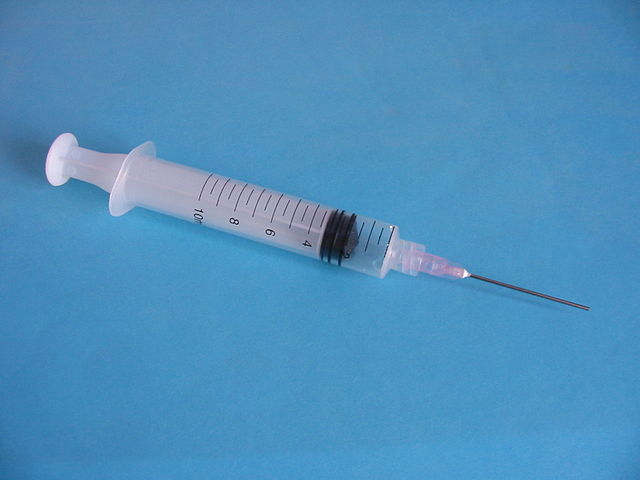Ophthalmology in the medieval Islamic world
Ophthalmology was one of the foremost branches in medieval Islamic medicine. The oculist or kahhal (کحال), a somewhat despised professional in Galen’s time, was an honored member of the medical profession by the Abbasid period, occupying a unique place in royal households. Medieval Islamic scientists considered it normal to combine theory and practice, including the crafting of precise instruments, and therefore found it natural to combine the study of the eye with the practical application of that knowledge. The specialized instruments used in their operations ran into scores. Innovations such as the “injection syringe”, a hollow needle, invented by Ammar ibn Ali of Mosul, which was used for the extraction by suction of soft cataracts, were quite common.
An Arabic manuscript, dated 1200CE, titled Anatomy of the Eye, authored by al-Mutadibih.
A syringe is a simple reciprocating pump consisting of a plunger that fits tightly within a cylindrical tube called a barrel. The plunger can be linearly pulled and pushed along the inside of the tube, allowing the syringe to take in and expel liquid or gas through a discharge orifice at the front (open) end of the tube. The open end of the syringe may be fitted with a hypodermic needle, a nozzle or tubing to direct the flow into and out of the barrel. Syringes are frequently used in clinical medicine to administer injections, infuse intravenous therapy into the bloodstream, apply compounds such as glue or lubricant, and draw/measure liquids. There are also prefilled syringes.
A typical plastic medical syringe fitted with a detachable stainless steel needle; the syringe is fitted with a male Luer lock fitting which the needle, which is equipped with a female Luer-Lock fitting (purple), screws into
According to the World Health Organization, about 90% of the medical syringes are used to administer drugs, 5% for vaccinations and 5% for other uses such as blood transfusions.
The threads of the Luer lock tip of this 12mL disposable syringe keep it securely connected to a tube or other apparatus.
Syringe made entirely of glass, with no parts made from plastic nor any other material





